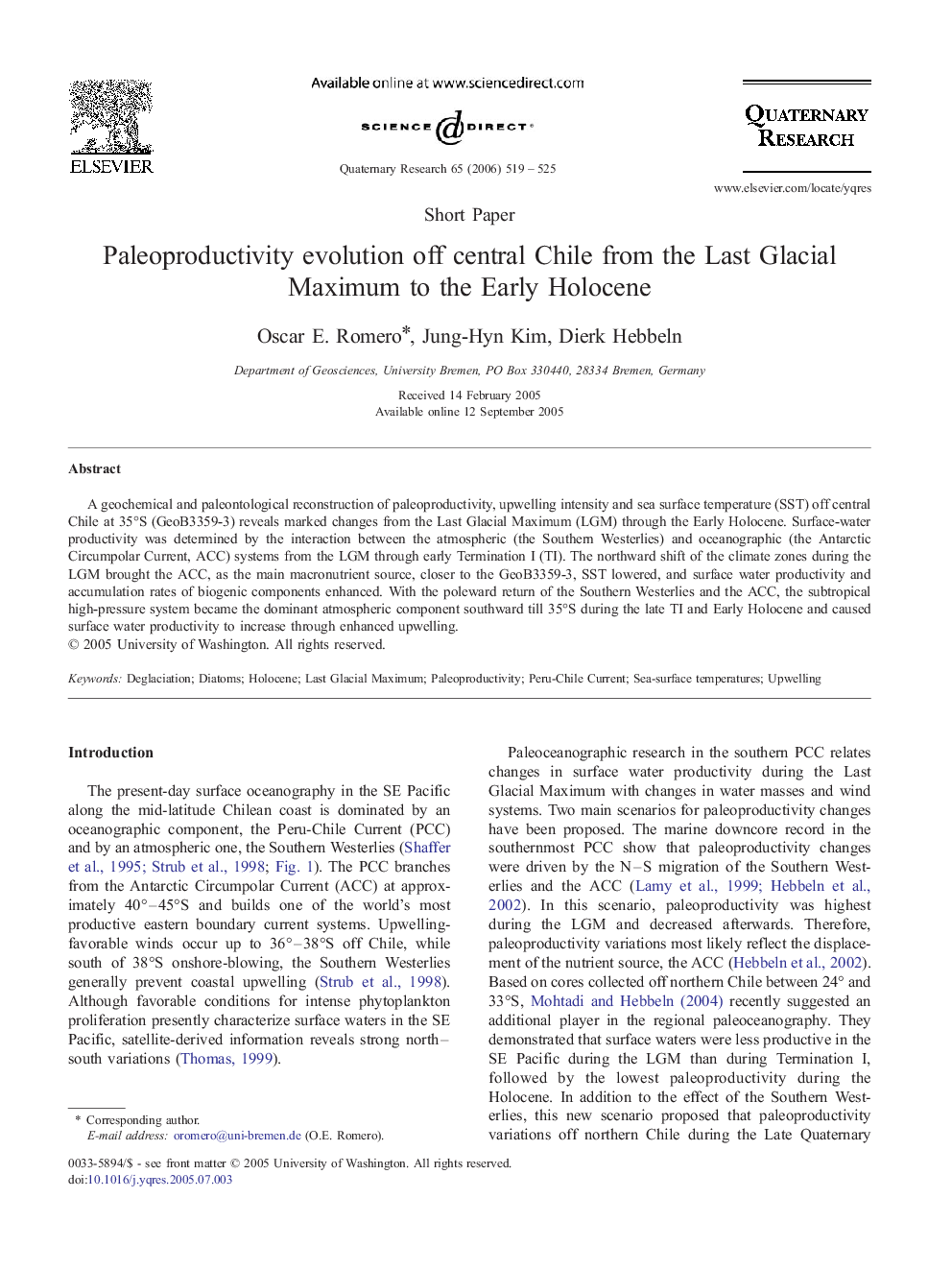| Article ID | Journal | Published Year | Pages | File Type |
|---|---|---|---|---|
| 1046250 | Quaternary Research | 2006 | 7 Pages |
A geochemical and paleontological reconstruction of paleoproductivity, upwelling intensity and sea surface temperature (SST) off central Chile at 35°S (GeoB3359-3) reveals marked changes from the Last Glacial Maximum (LGM) through the Early Holocene. Surface-water productivity was determined by the interaction between the atmospheric (the Southern Westerlies) and oceanographic (the Antarctic Circumpolar Current, ACC) systems from the LGM through early Termination I (TI). The northward shift of the climate zones during the LGM brought the ACC, as the main macronutrient source, closer to the GeoB3359-3, SST lowered, and surface water productivity and accumulation rates of biogenic components enhanced. With the poleward return of the Southern Westerlies and the ACC, the subtropical high-pressure system became the dominant atmospheric component southward till 35°S during the late TI and Early Holocene and caused surface water productivity to increase through enhanced upwelling.
